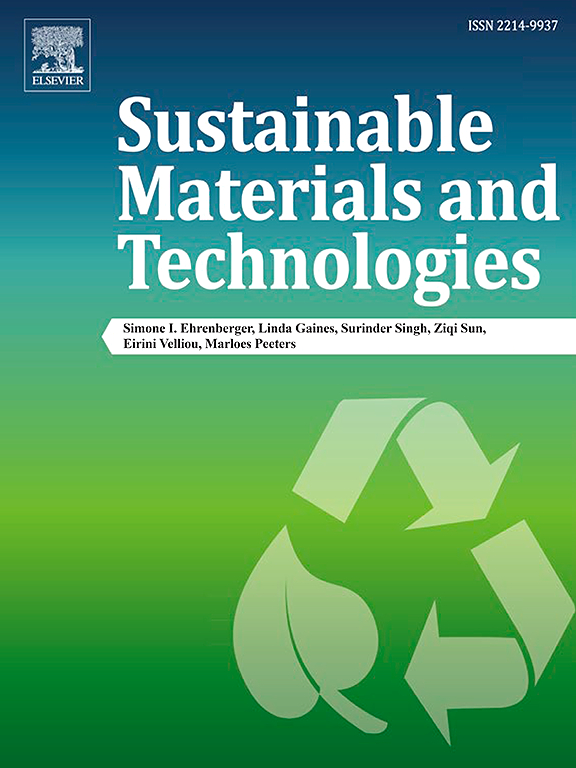利用飞秒和CO2双激光抑制熔融二氧化硅的微缺陷,提高激光损伤抵抗能力
IF 8.6
2区 工程技术
Q1 ENERGY & FUELS
引用次数: 0
摘要
激光超精密加工是抑制熔融石英光学元件表面缺陷(≥300 μm)的最有前途的方法之一,从而延长应用于大功率激光设备的熔融石英光学元件的使用寿命。这项工作提出了一种创新的双激光修复方法,该方法结合了飞秒和CO2激光的能力,可以解决熔融石英光学器件上更小的微缺陷(≤20 μm)。该方法包括两个步骤,首先使用飞秒激光在熔融二氧化硅的微缺陷区域创建高质量的光学结构,然后使用CO2激光进行熔融抛光以获得超光滑表面。修复后的结构表面粗糙度达到了双飞秒和CO2激光器的20 nm,与单飞秒激光器的54 nm相比有了显著的提高。进行了激光诱导损伤实验,结果表明,激光诱导损伤阈值(LIDT)由8 J/cm2提高到20 J/cm2(无缺陷表面LIDT为22 J/cm2)。分析了微缺陷及其修复结构的光致发光(PL)光谱,揭示了LIDT改进的根本原因。PL光谱显示,微缺陷区荧光强度为3500次,双飞秒激光和CO2激光修复后的结构荧光强度为106次。发光光谱表明,双激光修复后的熔融二氧化硅表面的点缺陷浓度与完美表面相当。这项工作为提高熔融硅光学器件的耐用性铺平了道路,有可能使它们用于需要更高输出的高功率激光设备。本文章由计算机程序翻译,如有差异,请以英文原文为准。

Micro-defect suppression on fused silica via dual femtosecond and CO2 lasers to improve laser damage resistance
Laser ultra-precision machining is one of the most promising methods for suppression of surface defects (≥300 μm) on fused silica optics, thereby extending the service life of these optics applied in high-power laser facilities. This work proposes an innovative dual laser repairing method that combines the capabilities of femtosecond and CO2 lasers to address much smaller micro-defects (≤20 μm) on fused silica optics. The proposed method consists of a two-step process, in which a femtosecond laser is first used to create high-quality optical structures in the micro-defect regions of fused silica, and then a CO2 laser performs melt polishing to obtain an ultra-smooth surface. The repaired structure has surface roughness 20 nm of the dual femtosecond and CO2 lasers, a striking promotion compared to 54 nm surface roughness for a single femtosecond laser. Laser-induced damage experiments are carried out, and the results show that laser-induced damage threshold (LIDT) is improved from 8 J/cm2 to 20 J/cm2 (LIDT for defect-free surface is 22 J/cm2). Photoluminescence (PL) spectroscopy of the micro-defects and their repaired structures was analyzed to uncover the underlying reasons for the improvement in LIDT. PL spectroscopy shows fluorescence intensity of 3500 counts in the micro-defect region, and 106 counts in the repaired structure obtained by dual femtosecond and CO2 lasers. PL spectrum indicates that the concentration of point defects in fused silica surfaces treated with dual laser repair is comparable to perfect surfaces. This work paves the way for advancements in the durability of fused silica optics, potentially allowing them to be utilized in high-power laser facilities that demand higher output.
求助全文
通过发布文献求助,成功后即可免费获取论文全文。
去求助
来源期刊

Sustainable Materials and Technologies
Energy-Renewable Energy, Sustainability and the Environment
CiteScore
13.40
自引率
4.20%
发文量
158
审稿时长
45 days
期刊介绍:
Sustainable Materials and Technologies (SM&T), an international, cross-disciplinary, fully open access journal published by Elsevier, focuses on original full-length research articles and reviews. It covers applied or fundamental science of nano-, micro-, meso-, and macro-scale aspects of materials and technologies for sustainable development. SM&T gives special attention to contributions that bridge the knowledge gap between materials and system designs.
 求助内容:
求助内容: 应助结果提醒方式:
应助结果提醒方式:


